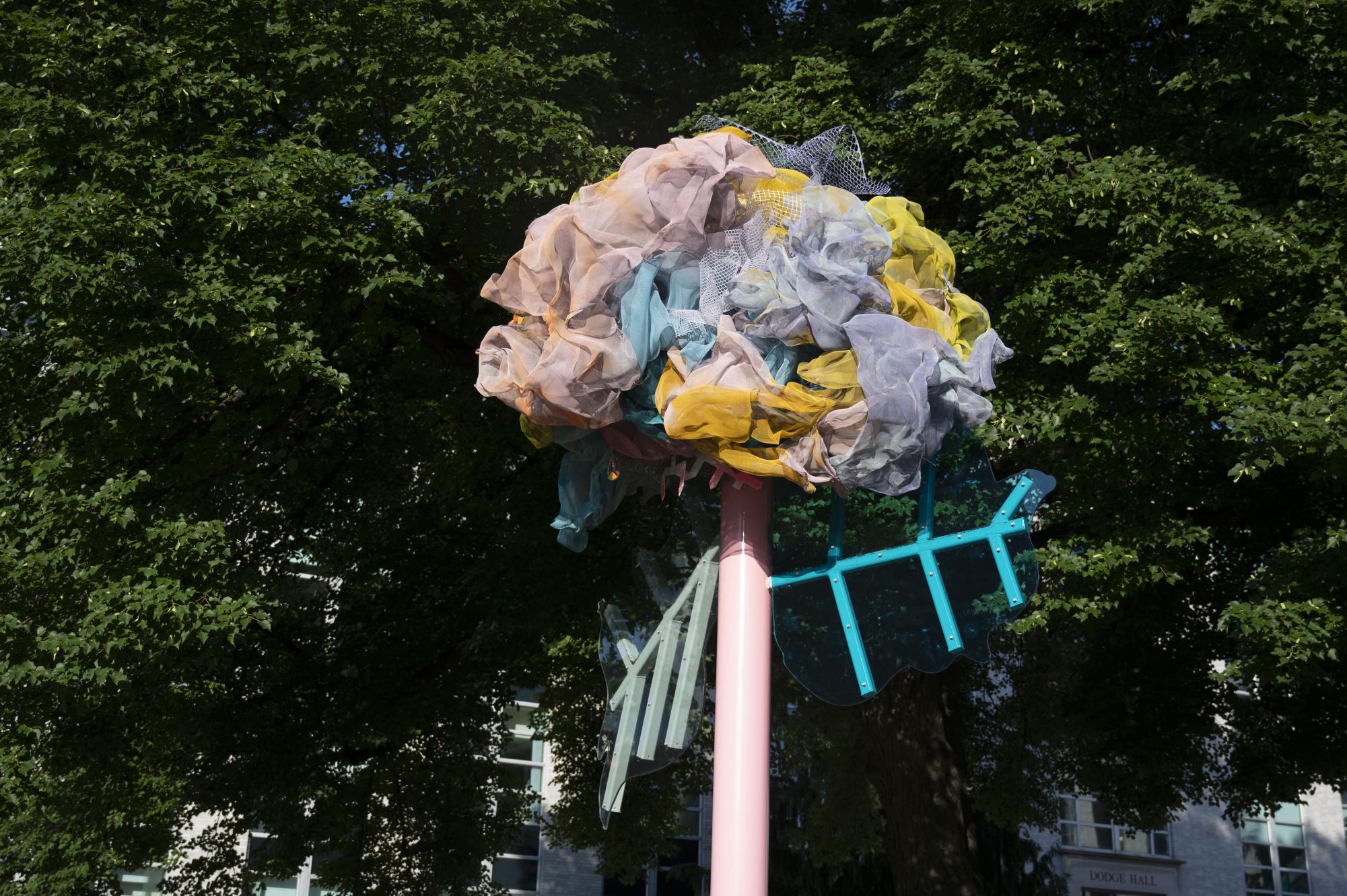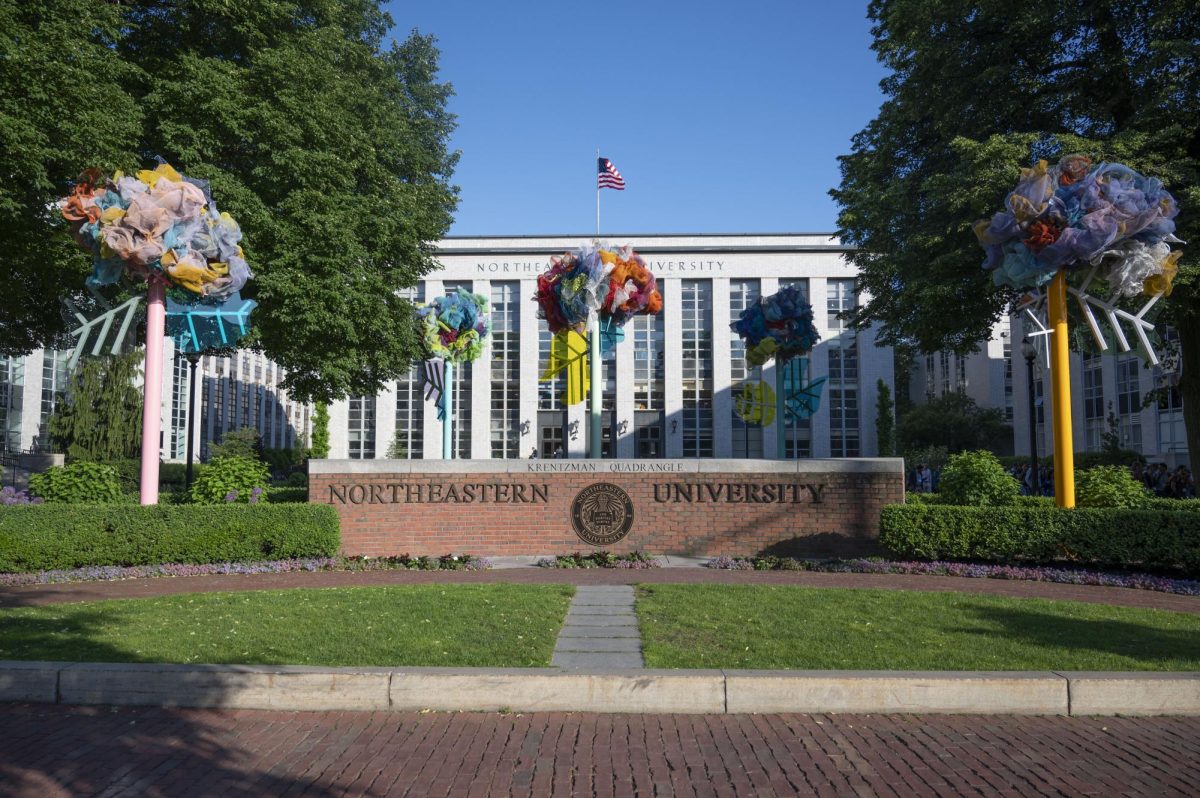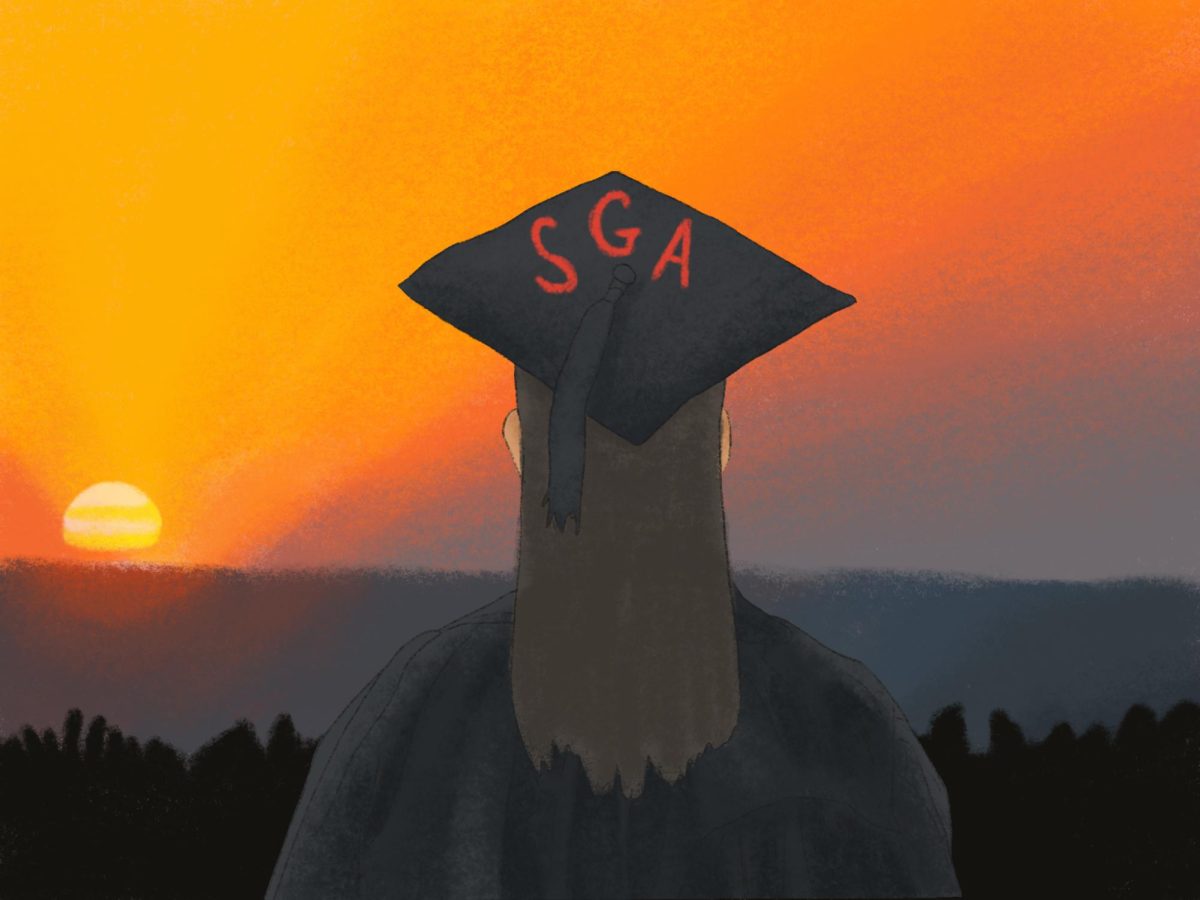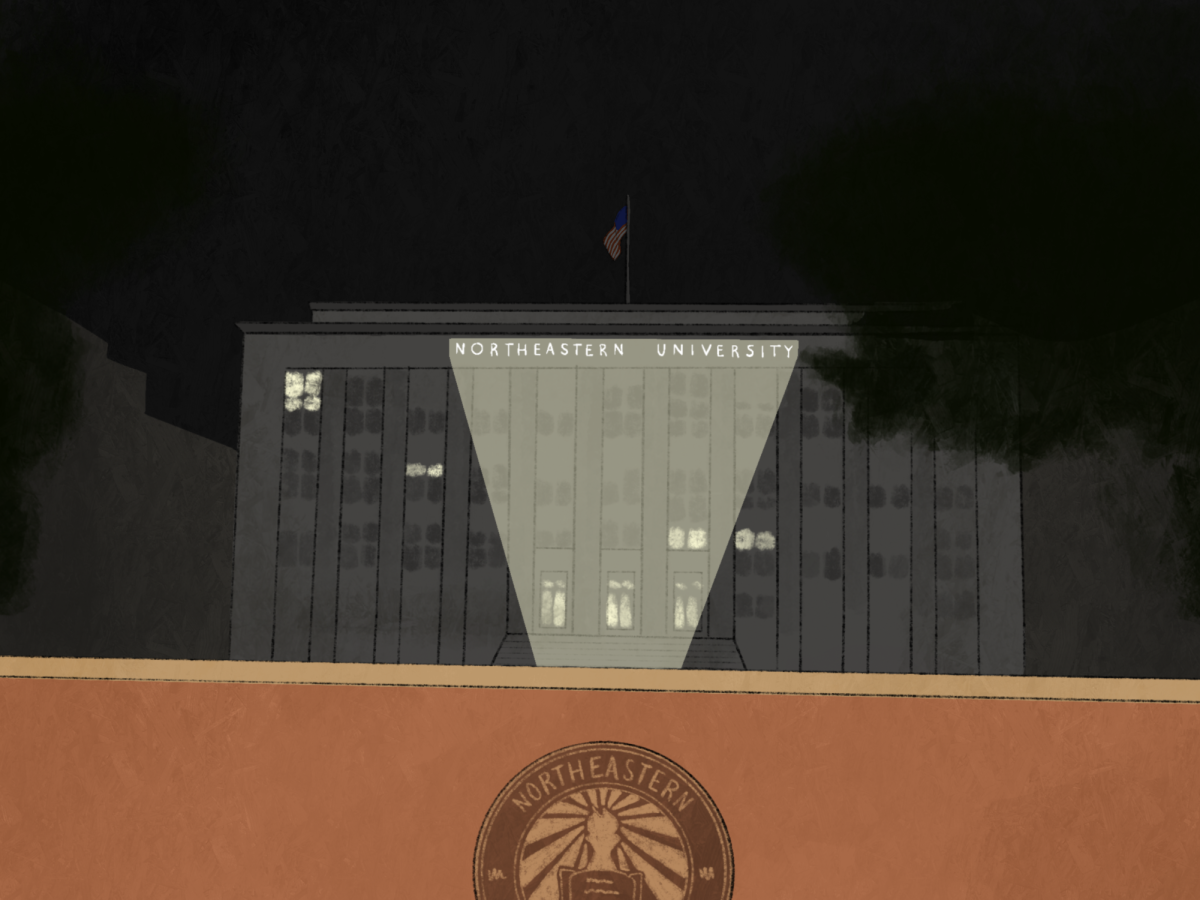Minus the orange fur and giant mustache, the Lorax has been resonating a lot with me lately.
While I don’t speak in defense of Dr. Seuss’ Truffula Trees, my beloved cause is the 15-foot trees of “Rooted,” the colorful art installation that’s provoked outcry since its debut on Krentzman Quad in April. As an exhibit, the trees have received numerous accusations that they disturb the aesthetic of our campus, and the desire to get them taken down seems to be one of the few things that many Northeastern students have agreed on — there’s even a petition to ask the university to remove the exhibit with over 1,700 signatures.
But after weeks of biting my tongue, half because I don’t want to interrupt this moment of student unity and half to avoid being disowned by my more opinionated friends, I’ve finally summoned the courage to speak my truth:
I think the trees should stay up.
I was a fan of the art from the moment I saw it — long before catching wind that it was controversial. That April afternoon, during my commute home from work, the colorful trees suddenly welcomed my train car out from the darkness of the Symphony station and onto the light of Northeastern’s campus.
Bold. Vibrant. Playful. The silly, unpretentious clusters of mesh possessed me with a momentary wave of giddiness. For what was likely the first time that day, I thought, “How fun!”
Given this initial reaction, it’s been disheartening to see so many students turning their noses up at the bold colors and funky textures of “Rooted.” Why is such a lighthearted display being treated like an invasive species on campus?
As I see it, Northeastern is in perpetual need of more “how funs.” While Dr. Seuss’ fictional Truffula Trees provided an environmental necessity, Northeastern’s “Rooted” trees provide an imperative social one: They’re a spoonful of childlike wonder prescribed to a LinkedIn-addicted university that often takes itself too seriously.
This being said, I’m not blind to the absurdity of the art. As a large and flashy exhibit, it’s unrealistic to expect that all students will be charmed by its introduction onto campus. However, the strong demands for it to be taken down are unwarranted. These requests dismiss not only the art’s subjectivity, but the experiences of students like me, who can credit this art for bouts of momentary joy.
The anti-tree petition is also riddled with complaints about the statues’ placement directly behind Krentzman’s Northeastern sign, a cherished backdrop for the Class of 2024’s graduation photos. Many have claimed that this installation ruined not only their visions for traditional photos, but the traditional feel of campus overall.

But unlike Harvard University or Boston College, adherence to tradition has never been a part of Northeastern’s appeal. Brought to life by a plethora of modern murals and sculptures, our campus is known for both its nontraditional aesthetic and nontraditional history. In just a few decades, Northeastern has rapidly transformed from a primarily nighttime commuter school to a residential, widely-known research university. Northeastern’s claim to fame therefore lies in its most unconventional attributes: its rapid growth and co-op program. Rather than shying away from the unique identity of our school, these out-of-the-box flowers proudly assert it.
So while I sympathize with students’ frustration at unfamiliar structures being abruptly put up just before graduation — the last thing the Class of 2024 needed was more surprises — I strongly disagree with the idea that they misrepresent Northeastern and our student experience. The trees of “Rooted” quite literally remind us not to forget our roots.
A well-intentioned gripe I’ve heard from opposed students is that the trees simply aren’t necessary. They just don’t get why, of all the other things it could go towards, Northeastern would choose to spend its money on this installment.
But I’d argue that the trees’ value becomes far more clear upon further investigation. By looking into its origins, you’ll discover that this piece isn’t just some random assortment thrown together by members of Northeastern’s administration. Rather, Cicely Carew, a talented Cambridge-based artist, created this piece with the aim of inspiring “radical joy” to “just one person” who witnesses it.
Carew’s installation is a powerful implementation of Northeastern’s Public Art Initiative, which exists to “create opportunities for the members of our community and beyond” to integrate their art into our urban campus. By investing in sculptures from a local artist and proudly displaying it at the very forefront of campus, Northeastern demonstrates that it takes its relationship with the wider Boston community seriously.
The trees also make another claim. As a humanities student at a school that tends to prioritize providing STEM resources over creative ones, I feel hopeful to see Northeastern put real pride and funding into artistic endeavors. The trees provide a comforting reminder: creativity is celebrated here, too.
With this art installation expected to blossom in the coming months (ivy may soon wrap around the sides of the trees’ poles), we have a decision to make.
As students, we can act as weeds, drowning out the joyfulness of “Rooted” with our unrelenting demands to have it removed. Or, we can begin to recognize the potential of these trees to grow us into more carefree and open-minded people.
Art exists to make us feel. Based on that metric alone, “Rooted” is doing exactly what it was meant to.
Samantha Denecour is a third-year English and political science combined major. She can be reached at denecour.s@northeastern.edu.


















